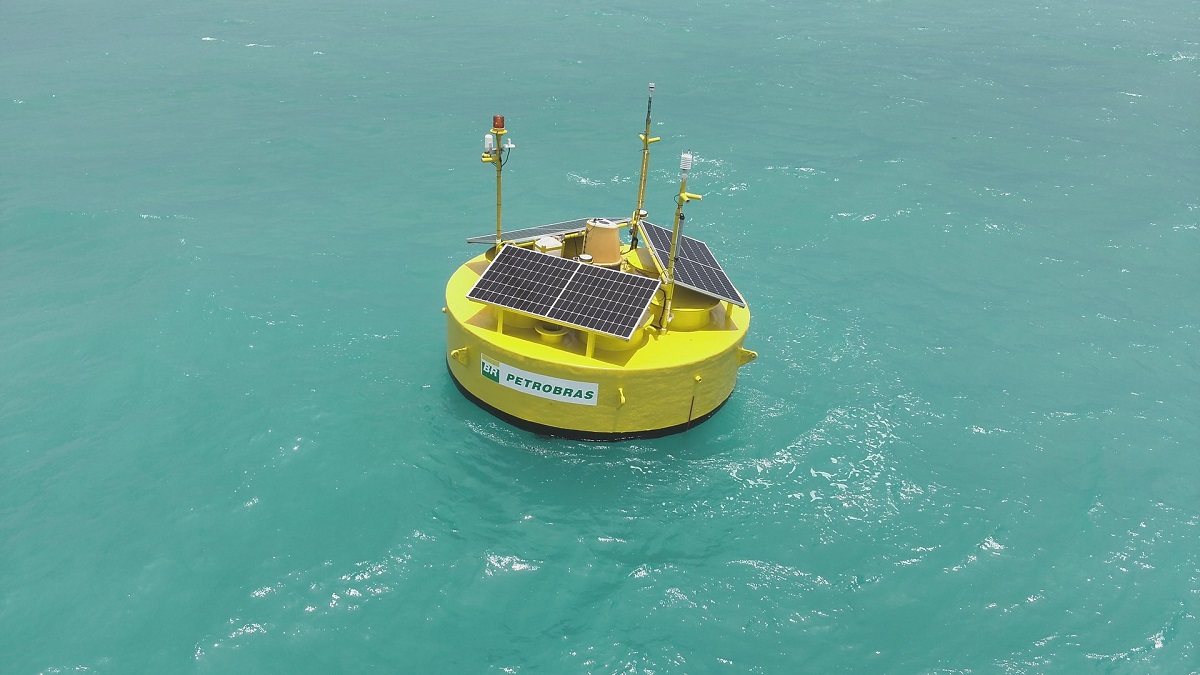Last October 19th, 2023, Petrobras began a new sequence of wind energy measurements on the coast of the State of Rio Grande do Norte (RN) with version 2.0 of a piece of equipment named Bravo – Remote Offshore Wind Assessment Buoy, an improvement of an unprecedented technology in Brazil developed by its Research and Development Center (Cenpes). The result of a partnership with the Senai Institute for Innovation in Renewable Energy (ISI-ER) and Embedded Systems (ISI-SE), the project is another relevant step towards energy transition. The total investment in this technology totals BRL 11.3 million, thanks to Research and Development (R&D) incentives from Aneel.
“The level of technological maturity of this piece of equipment has improved and resulted in great solutions for the limitations found in the first phase of testing. We expect a Bravo 2.0 that is robust and capable of meeting Petrobras’ needs in terms of measuring offshore wind potential in Brazil, being an important lever for us to make advances with regard to the new energy source”, says Carlos Travassos, director of Engineering, Technology, and Innovation at Petrobras.
Travassos highlights that the investment is part of Petrobras’ strategy to spearhead the energy transition process in the country. “There have been discussions about a new R&D project focused on installing new Bravos at strategic points on the Brazilian coast in order to increase data sampling and make the survey of wind potential even more reliable”, he states.
Bravo is a floating Lidar (Light Detection and Ranging) model that has been developed for the first time with domestic technology. It is an optical sensor that uses laser beams to measure wind speed and direction, generating data compatible with the operating environment of wind turbines. It is also capable of capturing weather variables, such as atmospheric pressure, air temperature, and relative humidity, in addition to oceanographic variables like waves and sea currents. All of this data is essential to determine the potential of a given area in terms of wind energy production.
According to Maurício Tolmasquim, director of Energy Transition and Sustainability at Petrobras, “when in its commercial stage, Bravo will contribute to increasing the supply of services and reducing the cost of implementing offshore wind projects in the country. As it is a floating device, this piece of equipment is easy to transport and install along the Brazilian coast”, he says.
Bravo 2.0
In its new version, an algorithm specially developed for the project allows the information collected to be corrected depending on position variations caused by sea waves and sea currents. Bravo 2.0 has also been increased in size, to accommodate two Lidar sensors instead of one. This increases the collection of data, which is transmitted to a cloud server through satellite communication to be analyzed at a later time.
This piece of equipment weighs 7 tons, is 4 meters in diameter, and 4 meters high, and is powered by solar energy modules. It will be launched 20 km off the coast of the State of Rio Grande do Norte, with support from the Brazilian Navy and the Intersal consortium, which operates the Areia Branca Salt Terminal. The testing and measurement stage will last until March 2024.
The information collected by the buoy will be compared with reference data obtained by a fixed Lidar sensor installed in the same terminal, to validate the functionality and reliability of the measurements made by the device.
Source Agencia Petrobras

